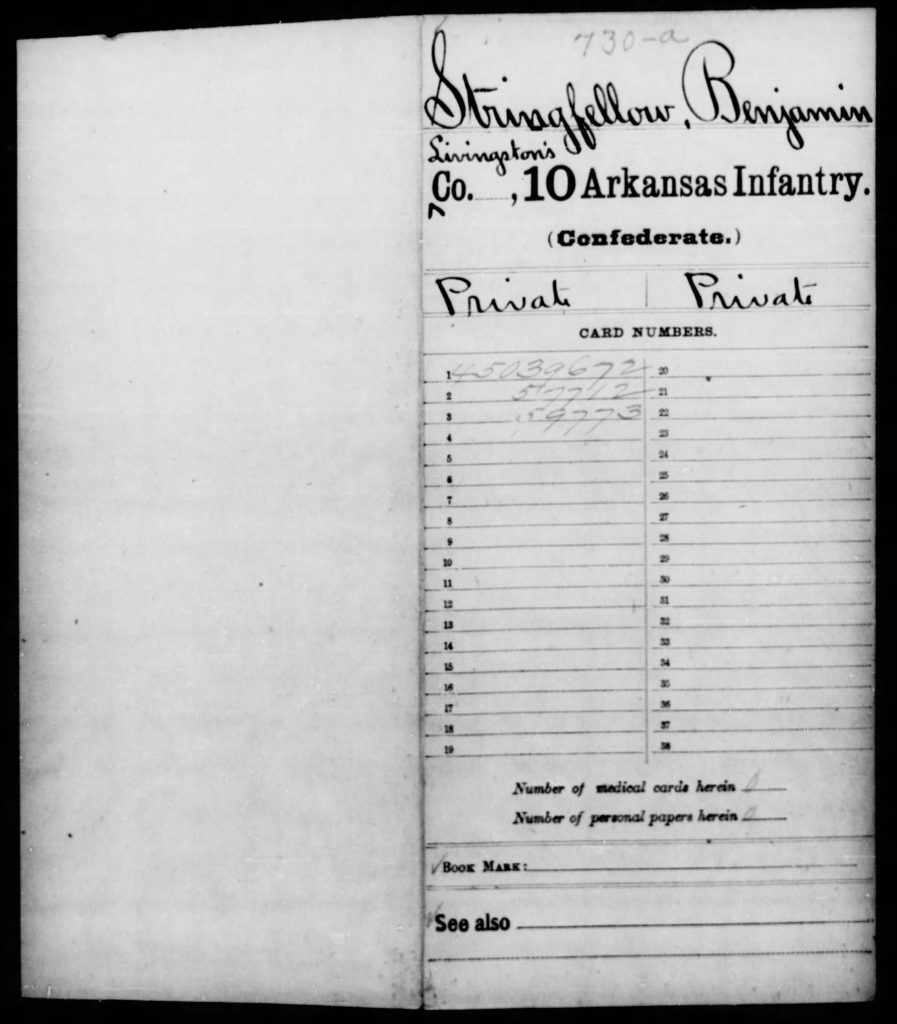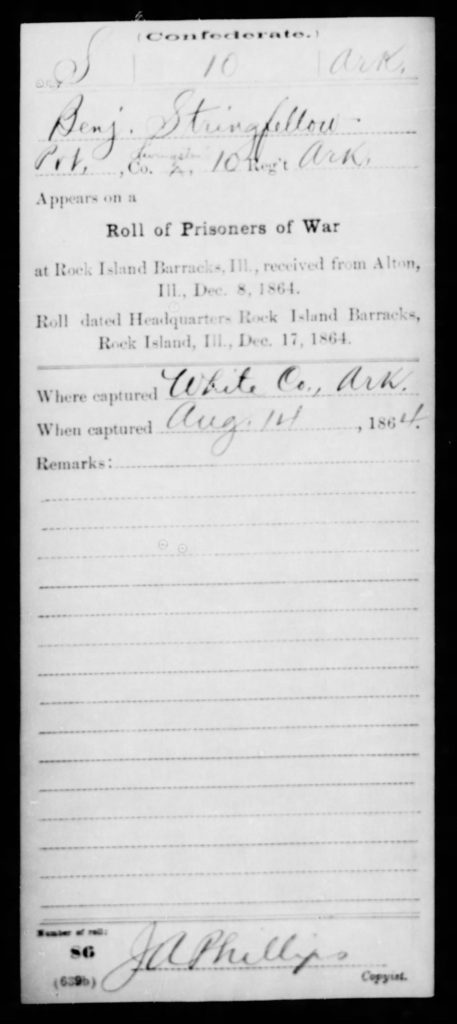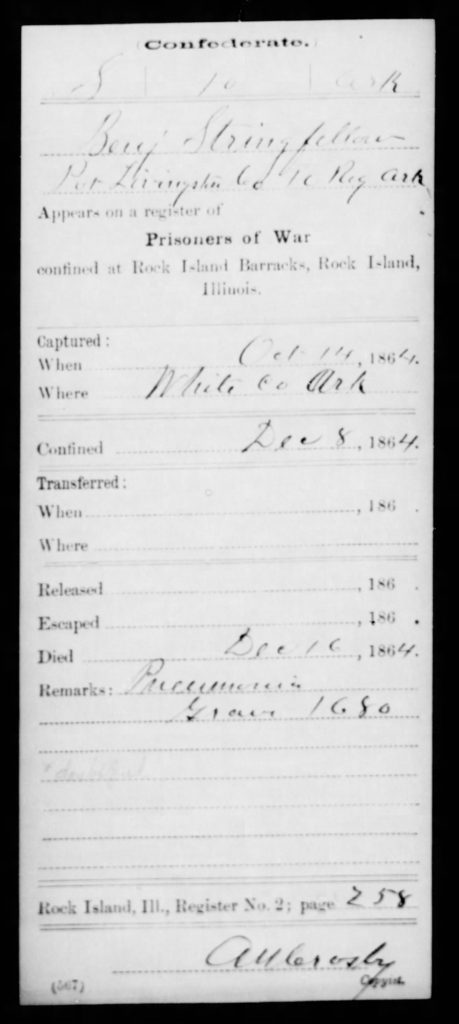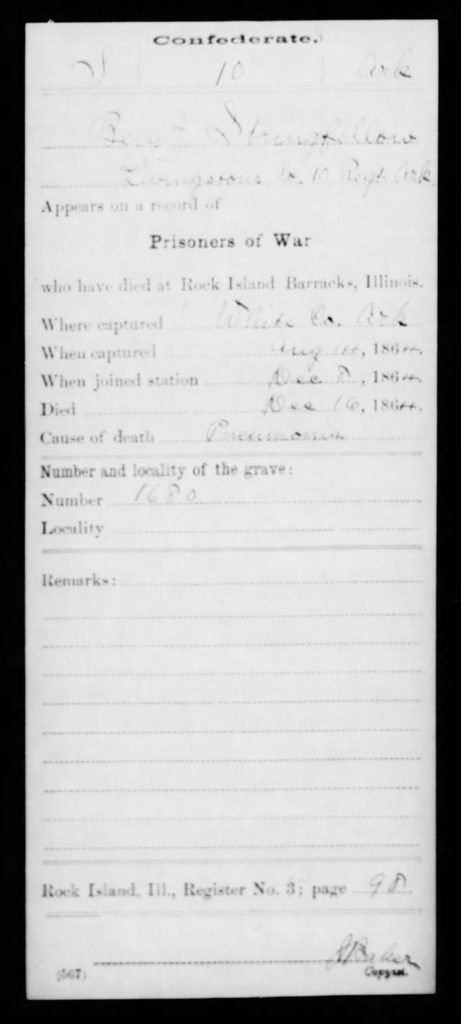After years of genealogical research you will quickly realize that discovery is entirely based on evidence and analysis. Assumptions are the devil of research. If you think you’ve got it all then you are willingly admitting to ignorance. I learn this lesson over and over again, but still, I prove myself wrong every time.
A Couple Of Reasons Why You Shouldn’t Make Assumptions
1) You don’t actually have all the sources you need to research an individual’s life, and you cannot access them yet. (Never say never.)
2) New sources that you never knew existed have suddenly appeared online.
3) You uncover something new about an ancestor that changes EVERYTHING about the research you’ve done on everybody connected to them.
4) You didn’t read a document properly in the first place. (This one is a big one. Been there, done that, a hundred times.)
Case Study: Benjamin Franklin Stringfellow, Confederate POW
This case study presents examples of 2) and 4) of how you can make assumptions, and be completely wrong, based on actual evidence you have collected.
Most recently, I did a double take on some research I conducted on my husband’s third great-grandfather, Benjamin Franklin Stringfellow. In an earlier article I showed off all the evidence I had collected on his prisoner of war experience as a confederate in the Civil War.
Little did I know that I was missing a key piece in his journey from being captured, to his imprisonment in Rock Island Prison, Illinois.
I have been reconstructing our family trees on Ancestry, trying to eliminate circumstantial evidence, and blatantly incorrect connections that other Ancestry members have made in their tress, from our own tree.
In doing this, I started taking a deeper look at the records I had found on Fold3. To my surprise I discovered new documents showing how Benjamin Franklin Stringfellow went from being in White County, Arkansas to Rock Island, Illinois.

Military Service Record, page 1. “Compiled Service Records of Confederate Soldiers Who Served in Organizations from the State of Arkansas”, The National Archives, Record Group 109, State of Arkansas, Roll 0016. Images taken from Fold3.

Military Service Record, page 2. “Compiled Service Records of Confederate Soldiers Who Served in Organizations from the State of Arkansas”, The National Archives, Record Group 109, State of Arkansas, Roll 0016. Images taken from Fold3.

Military Service Record, page 3. “Compiled Service Records of Confederate Soldiers Who Served in Organizations from the State of Arkansas”, The National Archives, Record Group 109, State of Arkansas, Roll 0016. Images taken from Fold3.

Military Service Record, page 4. “Compiled Service Records of Confederate Soldiers Who Served in Organizations from the State of Arkansas”, The National Archives, Record Group 109, State of Arkansas, Roll 0016. Images taken from Fold3.
He was captured by the Union on 14 August 1864 in White County Arkansas. It seems he was immediately brought to De Valls Bluff, which is a city now part of Prairie County. De Valls Bluff had become a key Union supply port after they took control from the Confederates in 1863.
On 20 August 1864, Benjamin was confined at Military Prison, Little Rock, Arkansas. He was then taken to the Military Prison in Alton, Illinois. He remained there until 7 December 1864, before finally being transferred to Rock Island Prison.
I still haven’t managed to find out exactly why he was captured in White County, Arkansas. While that is nearby De Valls Bluff, there wasn’t any skirmishes or battles that happened on the day he was captured in that area of the state. Another mystery to solve!


This Blog is really contain excellent points about Genealogist!!! So Thank you for this blog and continue sharing post with us.